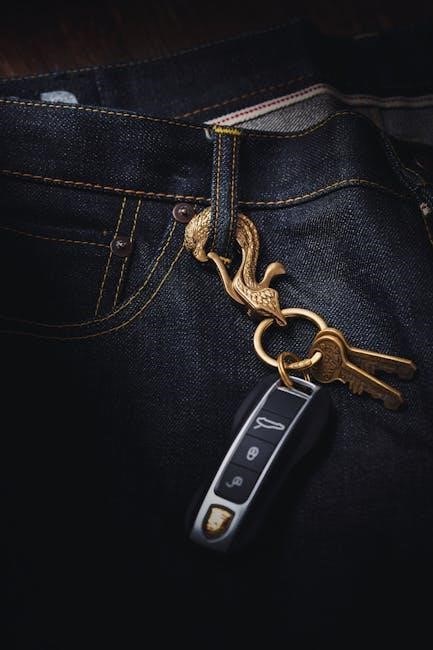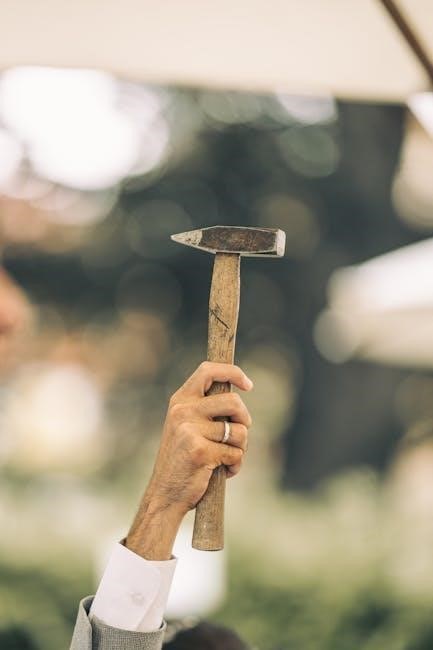
dragon raising manual
The dragon raising manual provides essential guidance for owners, covering various aspects of care and management, including selection and handling, with informative content and expert advice, for a successful experience always.
Overview of Dragon Care
The dragon raising manual is a comprehensive guide that outlines the best practices for caring for dragons, including their habitat, diet, and health.
It provides an overview of the different aspects of dragon care, from selecting a healthy dragon to creating a suitable environment.
With a focus on responsible pet ownership, the manual covers topics such as handling, feeding, and grooming, as well as common health issues and how to prevent them.
The guide is written in an accessible and easy-to-understand style, making it a valuable resource for both new and experienced dragon owners.
By following the advice and guidance provided in the manual, owners can help ensure their dragons lead happy and healthy lives, and build a strong and rewarding relationship with their pets.
The manual is a must-have for anyone considering bringing a dragon into their family, and is a great resource for those who already own one.
Importance of Responsible Pet Ownership

Responsible pet ownership is a crucial aspect of caring for dragons, as outlined in the dragon raising manual.
This involves providing a suitable environment, ensuring the dragon’s physical and emotional needs are met, and being committed to their long-term care.
Owners must also be aware of the potential risks and challenges associated with dragon ownership, such as the need for specialized housing and equipment.
By being a responsible pet owner, individuals can help ensure the well-being and happiness of their dragon, as well as contribute to the conservation and welfare of these amazing creatures.
The dragon raising manual emphasizes the importance of responsible pet ownership and provides guidance on how to achieve this, including tips on selecting the right dragon, creating a suitable habitat, and building a strong bond with your pet.
Ultimately, responsible pet ownership is essential for creating a positive and rewarding experience for both the owner and the dragon, and is a key theme throughout the manual.

Diet and Nutrition for Bearded Dragons
Nutritional needs are essential for bearded dragons, requiring a balanced diet with proper nutrients always.
Nutritional Requirements
Bearded dragons require a balanced diet that includes a variety of nutrients to stay healthy. A good understanding of their nutritional needs is essential for providing proper care. The diet should consist of a mix of vegetables, fruits, and proteins. Dark leafy greens like kale and collard greens are rich in calcium and vitamins, making them an excellent choice. Fresh fruits like berries and melons can be given in moderation, while proteins like crickets and mealworms provide essential amino acids. It is also important to supplement their diet with calcium and vitamin D3 to support strong bone growth. A well-balanced diet will help prevent nutritional deficiencies and related health issues. By providing a varied and nutritious diet, owners can help their bearded dragons thrive and live a long, healthy life. Proper nutrition is crucial for the overall health and well-being of these amazing creatures, and with the right guidance, owners can make informed decisions.
Feeding Techniques
Proper feeding techniques are essential for the health and well-being of bearded dragons. Owners should provide a variety of foods at different times of the day to mimic their natural eating habits. Live insects like crickets and mealworms should be gut-loaded with nutritious foods before being fed to the dragon. Fresh vegetables and fruits can be placed in a shallow dish for easy access. It is also important to create a feeding schedule to ensure the dragon is getting the right amount of food at the right time. A water bowl should always be available, and owners should change the water daily to prevent bacterial growth. By using the right feeding techniques, owners can help their bearded dragons develop good eating habits and prevent health issues related to overfeeding or underfeeding. With patience and practice, owners can master the art of feeding their bearded dragons and provide them with a happy and healthy life. Regular feeding and proper food handling are crucial for the dragon’s overall health.

Environment and Housing for Bearded Dragons
Proper environment and housing are crucial for bearded dragons, requiring specific temperature and lighting conditions always.
Setting Up a Suitable Environment
To create a suitable environment for bearded dragons, it is essential to consider several factors, including temperature, humidity, and lighting. A well-ventilated enclosure with a heat source and UVB lighting is necessary to mimic the dragon’s natural habitat. The enclosure should also have a temperature gradient, allowing the dragon to regulate its body temperature. Additionally, a substrate such as calcium-based sand or reptile carpet should be used to line the enclosure, and decorations like rocks and plants can be added to provide hiding places and visual stimulation. A water bowl and a hiding place or two should also be included to provide the dragon with a sense of security. By setting up a suitable environment, owners can help ensure the health and well-being of their bearded dragons. With proper research and planning, creating a suitable environment can be a fun and rewarding experience for both the owner and the dragon. Proper environment setup is crucial for dragon health.
Decorations and Accessories
Adding decorations and accessories to a bearded dragon’s enclosure can enhance its visual appeal and provide enrichment for the dragon. Rocks, plants, and branches can be used to create a naturalistic environment, while also providing climbing structures and basking sites. Other decorations, such as waterfalls or fountains, can add to the enclosure’s ambiance and help to increase humidity. Accessories like food and water dishes, hiding places, and temperature gauges are also essential for maintaining a healthy and comfortable environment. When selecting decorations and accessories, it is important to choose items that are safe and durable, and that will not harm the dragon if ingested. A variety of decorations and accessories are available, allowing owners to customize their dragon’s enclosure to meet its individual needs and preferences. By incorporating decorations and accessories, owners can create a stimulating and engaging environment for their bearded dragon, promoting its physical and mental well-being. This can help to reduce stress and promote a healthy lifestyle.

Health and Hygiene for Bearded Dragons
Proper health and hygiene practices are crucial for bearded dragons, including cleaning and disinfecting, to prevent disease and promote overall well-being always with expert care and management techniques available.
Common Health Issues
Bearded dragons are prone to various health issues, including metabolic bone disease, respiratory infections, and impaction, which can be caused by poor diet, inadequate lighting, and insufficient hydration.
Regular veterinary check-ups and a balanced diet can help prevent these issues, and owners should be aware of the signs and symptoms of common health problems, such as lethargy, loss of appetite, and changes in stool or urine output.
By being informed and taking proactive steps, owners can help their bearded dragons live long, healthy lives, and prevent common health issues from becoming serious problems, with proper care and attention to detail, and a commitment to providing a healthy and happy environment.
Additionally, owners should also be aware of the importance of maintaining good hygiene and cleaning practices, to prevent the spread of disease and promote overall health and well-being, with a clean and well-maintained environment.
Hygiene and Sanitation
Proper hygiene and sanitation are crucial for maintaining a healthy environment for bearded dragons, and owners should prioritize cleaning and disinfecting their enclosures regularly.
A clean environment helps prevent the spread of disease and reduces the risk of respiratory infections, and owners should remove soiled substrate, clean food and water dishes, and disinfect all surfaces with a pet-safe cleaning solution.
Regularly cleaning the enclosure also helps to reduce odors and prevent the buildup of bacteria, and owners should wash their hands before and after handling their bearded dragons to prevent the transfer of germs.
By following proper hygiene and sanitation practices, owners can help keep their bearded dragons healthy and thriving, and prevent common health issues from arising, with a clean and well-maintained environment, and attention to detail, and a commitment to providing a healthy and happy home.
The dragon raising manual provides a comprehensive guide for owners, covering essential aspects of care and management, and by following the advice and guidance outlined, owners can help ensure their bearded dragons lead happy and healthy lives.
With a focus on responsible pet ownership, the manual promotes a caring and compassionate approach to dragon raising, and encourages owners to prioritize their pets’ needs and well-being.
By committing to provide a suitable environment, a nutritious diet, and proper care, owners can help their bearded dragons thrive, and enjoy a rewarding and enriching experience, with a deep understanding of these amazing creatures, and a lifelong companion.
Ultimately, the dragon raising manual serves as a valuable resource for owners, offering expert advice and guidance, and helping to foster a strong bond between owners and their beloved pets, with a lasting impact on their lives, and a deeper appreciation for these incredible animals.